Literacy in ACTION!
Meet Rachel Harris, third grade teacher and literacy guru at Irwin Academic Center:

I met Rachel at the NCAEE Region 6 conference where we were both presenting material to teachers. I found her session on differentiated literacy instruction very informative and timely as I desire to strengthen my literacy instruction from a status of adequate to AWESOME! I reached out to Rachel after the conference to ask if I could come watch her teaching techniques in action. She was extremely kind and willing to open up her classroom to help me grow as a teacher. (Thanks Rachel!)
I set up a visit to Irwin Academic Center and brought along my literacy specialist from my school. [A quick sidebar, “Irwin is the only CMS full magnet program for Learning Immersion (K-2) and Talent Development (Academically Gifted-grades 3-5) students. Both programs are accelerated and offer students rigorous and academically challenging curricula. Students are enrolled by entering a school lottery drawing which is held in early spring.” ]
We arrived early and had a chance for Lisa Pagano, the Literacy facilitator, to show us around the school. Of course, I snapped as many pictures as I could!
Their school mascot is an owl so many classrooms build school culture by incorporating the mascot into their own classroom. This 3D owl is inspiring!
Talk about “the life!” Who doesn’t want a classroom with this cozy nook ?
And this area of the room? Amazing! I instantly want to become a kid again and set up shop here as a reader. What a comfortable learning environment- not to mention this feeds my obsession of tropical locations!
Then it was time to visit with Rachel… She had two chairs set up in the back of her classroom to accommodate us. [Another sidebar: This school has varying sized classrooms, so many of the pictures are from the larger “apartment style” classrooms, where Rachel had the challenge of creating a large feel in very small quarters. Regardless, she had enough room for two additional adults without disrupting her classroom flow and instruction. Thanks again Rachel!]
Students were entering from recess and grabbing water before Literacy began. I made the most of this opportunity, and walked the walls of the classroom, snapping pictures of endless anchor charts and other instructional materials I found inspiring:
There are a couple of reasons why I appreciate this anchor chart. First, it is teaching students to utilize text evidence to support their reasoning. This is a higher-order thinking skill that many students struggle with. However, teaching them how and then holding them accountable for referencing the text as evidence of their thinking process is a job well done by teachers, in my opinion.
Secondly, coding is a great note-taking strategy and with a universal coding system students can collaborate easily due to familiarity.
Lastly, the whole point of this anchor chart is to teach students to think while they are reading. So often, students get “lost” in their reading which is why books are so entertaining. However, when we are not aware of our own thinking it is hard for us to get past the surface and dive deeper into books. This helps students realize the thinking they are doing, record their thoughts as they go, and then utilize this thinking map to come up with an overall theory or generalization supported by the text. EXCELLENT resource and a great artifact to support how education is helping students become thinkers instead of memorizers so that they can be influential contributors to society.
Speaking of metacognition (thinking about your own thinking), impressions of characters and people can change as you learn more about them. As a reader gains information and insight on characters by diving deeper into the book, recording their initial thoughts and how it compared to their feelings at the end can be powerfully insightful. This applies to life and the common mantra of “don’t judge a book by its cover.”
These anchor charts resonated with me personally because I am currently helping my students prepare for state assessments. Learning how to overcome text barriers, like those mentioned above, is a key to being successful on these upcoming tests and with skill application in general. I used this model to create my own anchor chart to help remind students that these barriers are normal and that we have strategies we can use to overcome them and WIN in the end!
Inferencing is another tricky skill. Often times, students do best with “right there” in the text answers, where the author feeds the reader information. It is especially tricky to make an inference when a student has no background information on the topic.
For example, if the text states “Johnny silenced his alarm clock and turned over,” students can infer that Johnny was tired because they have experienced this scenario before (personally or someone they know). Therefore, it is an easy inference.
But, what if the text stated: “Johnny visited the spot where Charley the dog was laid to rest daily?” This can be tricky. Students might not have lost a dog and might not know the yearning a child would feel about this loss, thus motivating the character to visit the dog daily.
But what if the author meant even more? What if the author was foreshadowing how Johnny deals with loss in a later chapter when he is forced to move a town away from his friends? Depending on a student’s level of understanding of “loss” will influence the depth at which they can pick up on the author’s message in this one sentence.
As a result, teaching students to read between the lines while they read is so important. [Sidebar, again: A great way to begin teaching inferences is to partner students up and have them face one another. Hand them a card with an emotion written on it and just like with charades, act out the emotion using their face. The other student has to guess the emotion and provide evidence as to how they came to that conclusion. This builds students confidence in the thought that they already make inferences without even knowing it!]
This anchor chart is a great way to organize inferences. Take the author’s words and illustrator’s pictures to record a character’s actions. Then, explain why the character behaved that way under “motivations.” Finally, utilize the motivations listed to come up with a theory that describes this character and their repetitive behaviors. This chart helps a student move through the higher-order thinking process by starting at the “right there” actions, infer the motivation through text clues and then utilize their background knowledge on the character to form a theory. AWESOME THINKING again!
Word work is challenging in my classroom, mainly because phonics is primarily taught in the K-2 classroom, but now is creeping up to third grade. I cannot remember learning these skills myself as a student and struggle to adequately teach this to students as a result. This quick vocab chart is incredibly helpful as a reference tool while students are working with various types of words and patterns.
We just began a unit on biographies and students are expected to create a biography mini book at the end of the unit. We are discussing chapters, headings, and paragraphing and I saw this anchor chart as a helpful way to remind students that when they transition from thoughts and ideas, a writer must create a new paragraph. I, of course, used this as a model to create my own anchor chart!
Teachers… can’t your students stand forever at a book shelf sifting through books? Ugh! I have used timers, assigned “check out” days, and many other ideas that have failed. I believe this anchor chart explains why my past attempts were unsuccessful. Without teaching a student how to go about locating the right book, they will take forever. So all of my efforts to rush them did not enable or equip them to make an appropriate choice, let alone a quick one. Now, I can teach them HOW to choose a book so that when it is their turn they have the tools to direct their shopping and make it an efficient check out process.
Remember how I said Rachel has a small classroom but utilized space well to make it appear larger? Above is an example. Why NOT write on the filing cabinet? Magnets hold the white board markers, and it erases easily! A great way to take a must have object and re-purpose it so that it has multiple uses. Shout out to Rachel for creative problem solving!
My FAVORITE instructional material is this Exit Ticket chart. Here student numbers are listed. Whenever Rachel wanted to check student’s understanding of a concept, she asked students to jot their thoughts in response to a specific prompt on the post it. Students would leave the post it under their assigned number. At the end of the school day, she would take the post its and place them in “not mastered,” “partially mastered,” and “mastered” piles. Then, she would create skill and strategy small groups for the following week based on these post it piles. What a easy way to collect and utilize data to drive instruction. Again, nice job Rachel!
The time then came to watch Rachel in action! She began with her mini lesson, that referenced the read aloud she did earlier in the day (Bunnicula). Students gathered on the carpet to listen to her teach about how readers digest and approach a mystery text. Her anchor chart began with the lesson’s topic (“identify the problem or mystery”) and each subsequent lesson will be added to this chart as a reference for students throughout the unit. Rachel tied in her book as she dived into identifying the problem in a mystery. She listened as students shared their thoughts:
She also read aloud sections from the book to model how to utilize the text to identify the problem as well as think aloud about what was read:
Students remained engaged by turning and talking with their assigned partners and stopping and jotting in their notebooks:
[Yes, another sidebar: Rachel had students set up their notebooks prior to this part of the lesson. They have 8 post it notes in their notebooks- 4 on the left and 4 on the right. The four on the left are numbered 1-4 as well as the post its on the right. Each post it corresponds with the mini lesson of the unit. Therefore, with 4 mini lessons, each one will be devoted to one post it. Now, you might be wondering why there are two number ones, two number twos and so forth? One side of the notebook is for students to jot about the read aloud and what Rachel models. The other side of the notebook is for students to jot about their own independent reading book on the same skill or strategy modeled in the read aloud that day. So this follows the lesson format of guided practice (post it # 1 with read aloud) to independent practice (post it # 1 with independent reading book). It increases the likelihood of students transferring the skill since the format is the same]
Students made their way to their seats for 45 minutes of independent reading and to stop and jot on the skill learned in the mini lesson (finding evidence of the problem in the mystery):
Rachel began meeting with her small groups as the other students were independently reading. These small groups were created based on a poetry assessment given the week prior, and then conferring meetings were set based on who she felt she needed to meet with individually to check in on reading progress in terms of fluency as well as skill acquisition.
Here is a picture of Rachel meeting with her small group to review the poetry assessment:
What’s great about her instructional approach is that she photocopied the poem on the assessment without the questions. This way she could help students dive in stanza by stanza to comprehend the text without focusing on what the questions were or how well they personally performed on the assessment. Nice job Rachel!
She modeled her reading and thinking about the first stanza, and helped students do the next one. She encouraged students to jot on their own paper to record their thinking. By the end of the session, all students had a deeper understanding of not only the text but the strategy to make sense of poetry text.
Next came one-on-one meetings with students. Each student is given a reading folder made out of a manila folder with a reading log attached as well as a page protector of goals and reading behaviors listed on post it notes. See below:
When Rachel meets with each student they review the goals they set last time and discuss progress with the goal. If mastered, they move it to the “habit” column as a way to celebrate skill acquisition but also as a reminder to continue using the particular skill or strategy. I think its a great idea to date the post its like Rachel did as it helps a child realize how quickly they are mastering skills and how much progress they are making when they look back at older sheets of post it notes.
At this point, Rachel listened to the student read a section aloud out of their independent reading book and made in-the-moment teaching decisions to help the student decode words, increase fluency, comprehend text, etc. Before the 10 min meeting was complete, Rachel jotted a new goal for the student, when appropriate. This was added to the “Strategies I’m Working On” section.
I noticed Rachel stopping and jotting her own notes before she called the next group or student to the back table for instruction. So, I peeked at her notes:
She created this awesome document to keep track of who she was meeting with and what she was meeting with them about. At the top is the lesson topics for the week, and below that she fit all of her students’ names on one sheet of paper. Next to the student names are 5 boxes open for each day of the week that she might potentially meet with a student, and then a large space to record notes during the actual meeting.
She explained to me that SG was code for “small group” and C was code for “conferring,” meaning meeting one-on-one. If a star was listed, that meant the student did something notable during her observation and she recorded it. If there is a T circled that referred to her main teaching point during the meeting. It is especially important to note that she placed a date next to the notes which can be helpful when you look back over the documents after a lengthy period of time. The major advantage of having all students on one page, versus a page solely dedicated to one student in efforts to see reading behavior trends, is that it helps visually see who Rachel is meeting with daily or often and who she tends to leave alone. This system ensures she at least meets with everyone once in a 2 week span of reading instruction as well as looks for trends of student progress with reading skills.
Rachel completed the other components of her literacy block in the morning before I arrived (word work and writing). Students began to transition into Science, but before they did she allowed them a brain break:
This is a great way to get students up and moving after a long period of learning. Before sneaking out, I peeked at a student’s Science and Social Studies notebooks:
I love the way she provides an outline for the lesson. It was quite apparent this is a normal procedures in class as students moved about without directions or reminders: receive notes, glue in notebooks, begin filling in missing information as the teacher explains the content. This is an excellent scaffold and could help students develop note-taking techniques. I am thinking of utilizing this with some of my slower writers and lower learners and then wean them off when they are ready to try it on their own.
I had a great time learning in Rachel’s classroom and am grateful that we have teacher leaders in our very own district to learn from. I hope you find some of these literacy materials and approaches helpful and use them to become more successful in your very own classroom!
What did you find most interesting about Rachel’s instruction? Why?
What is something you plan to take away and apply in your own classroom?


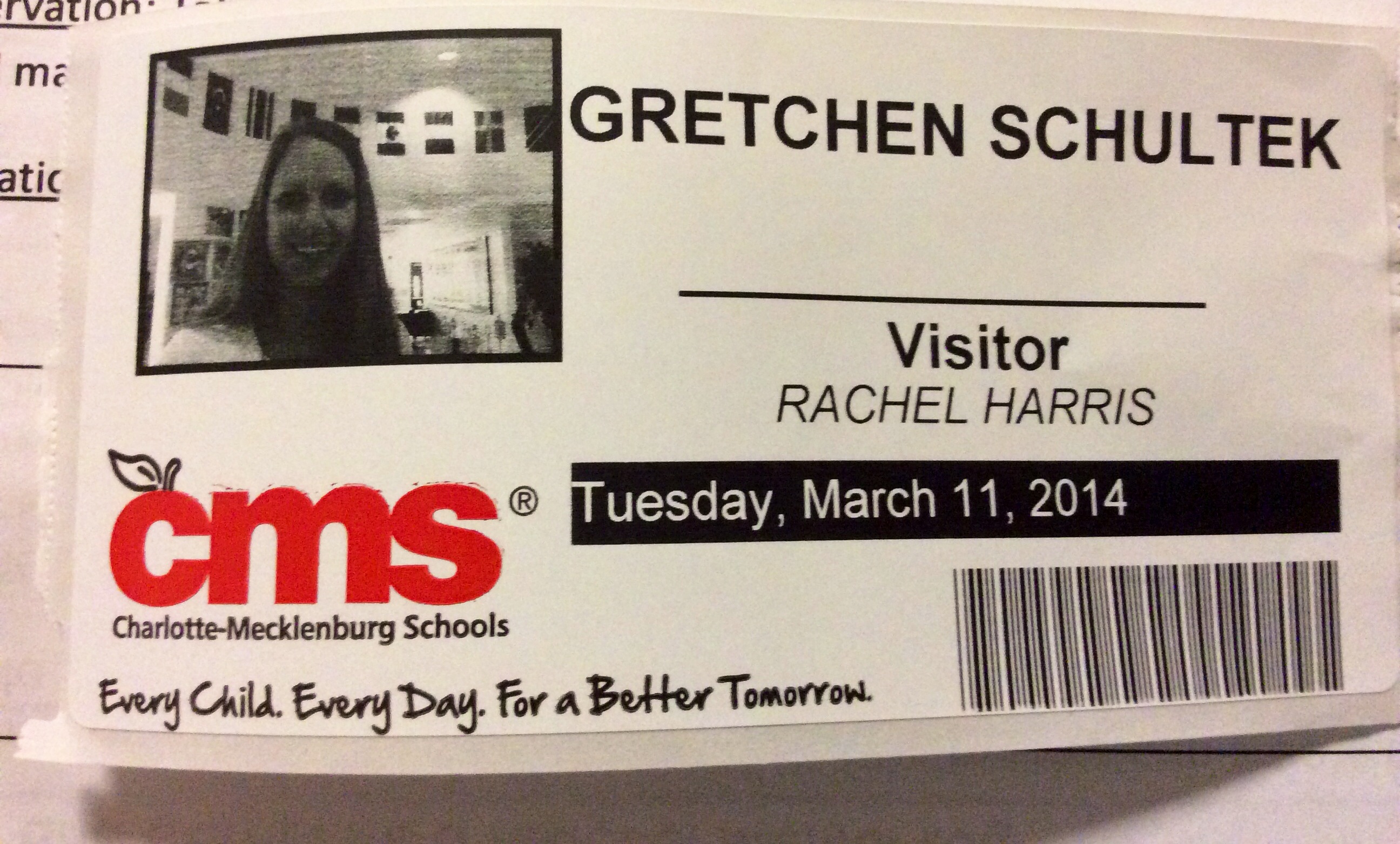
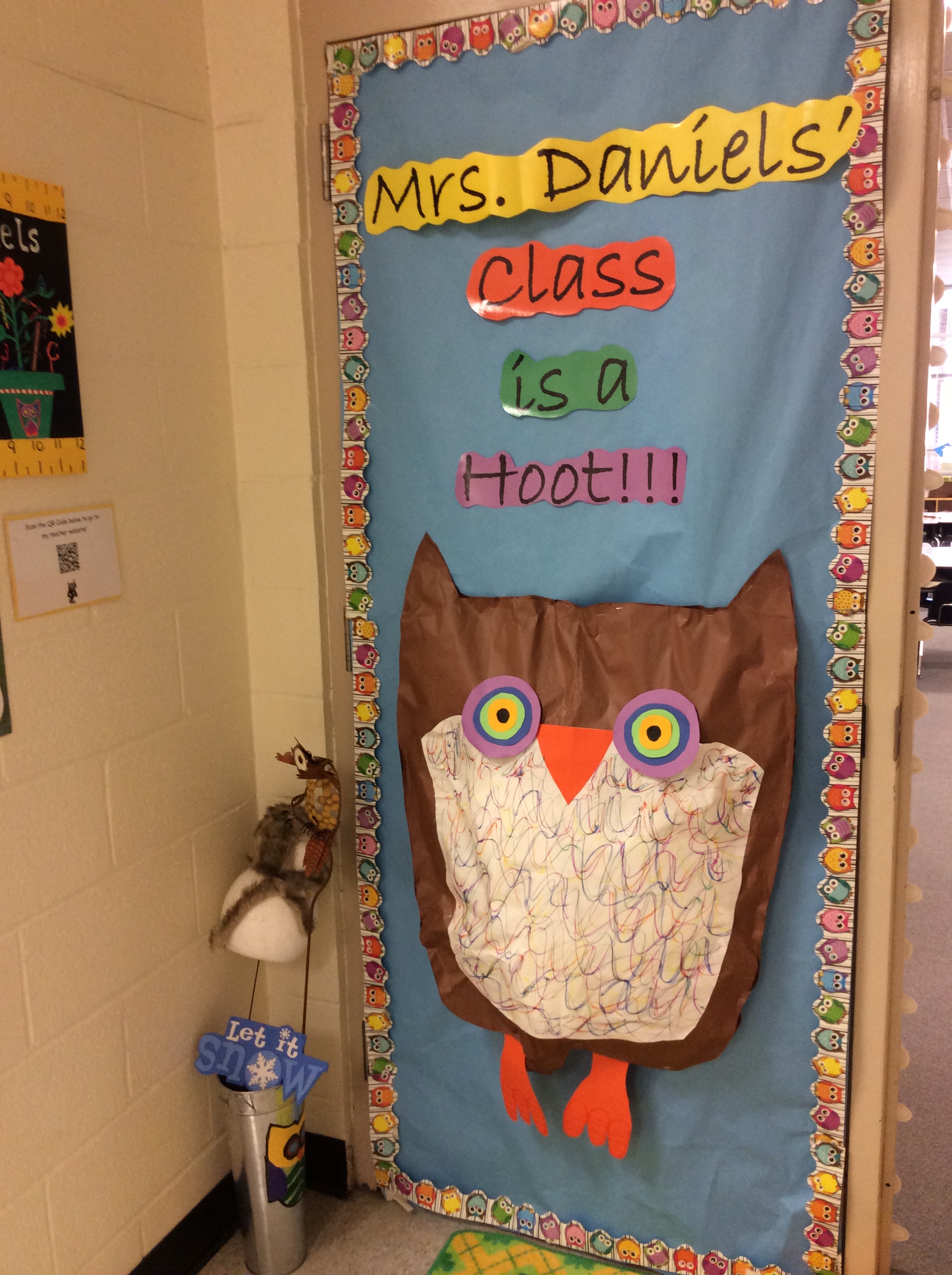
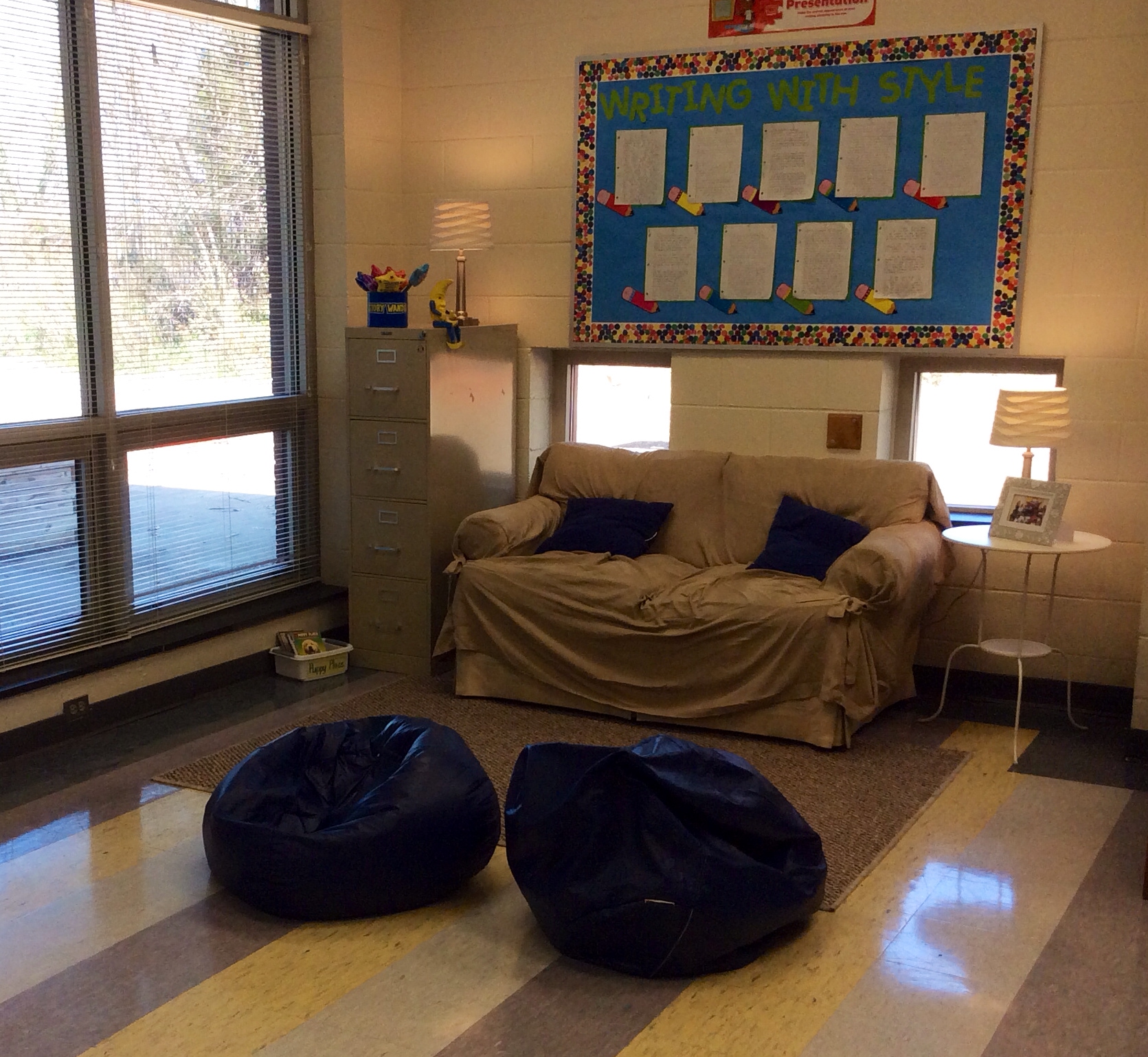
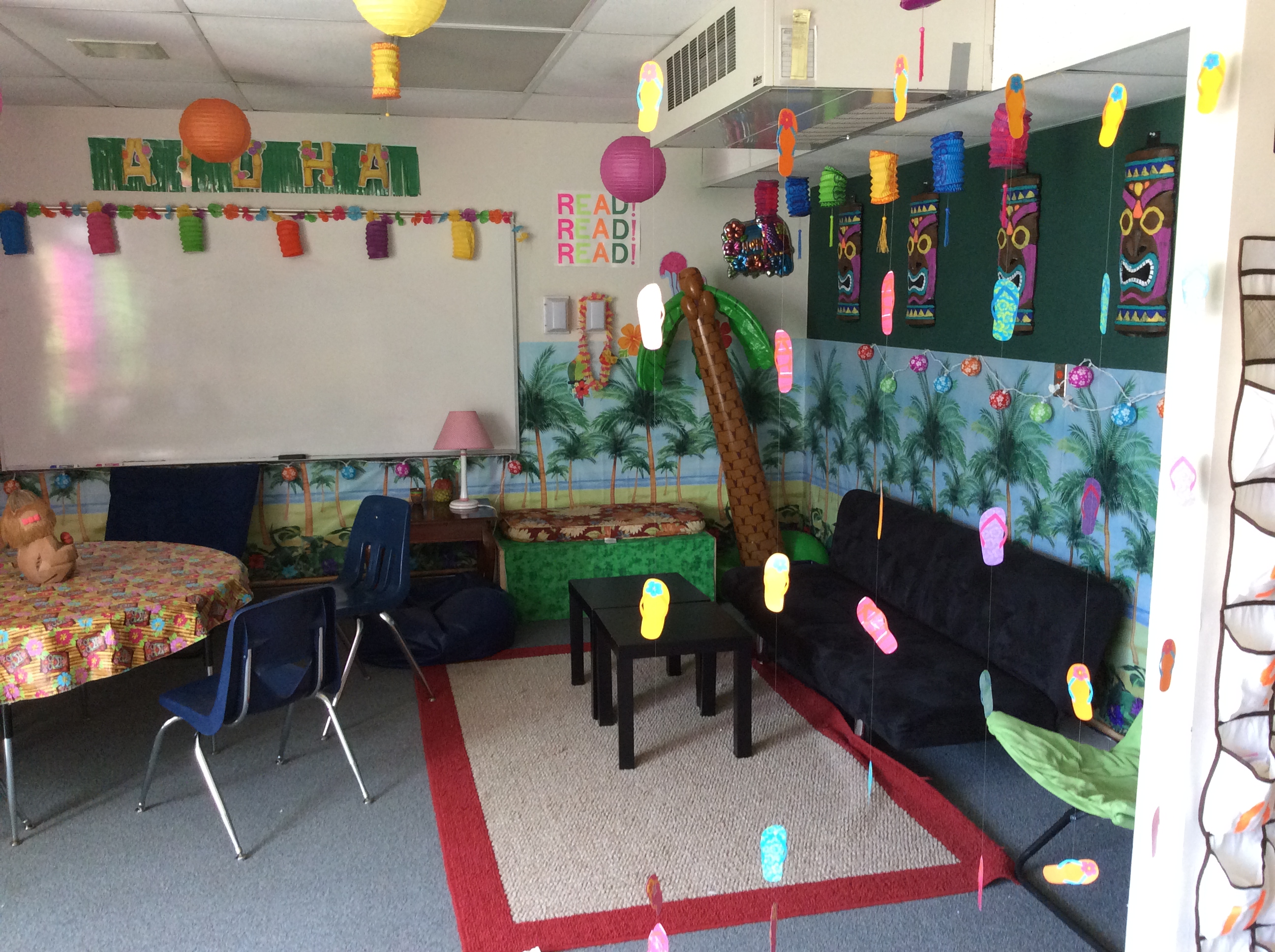



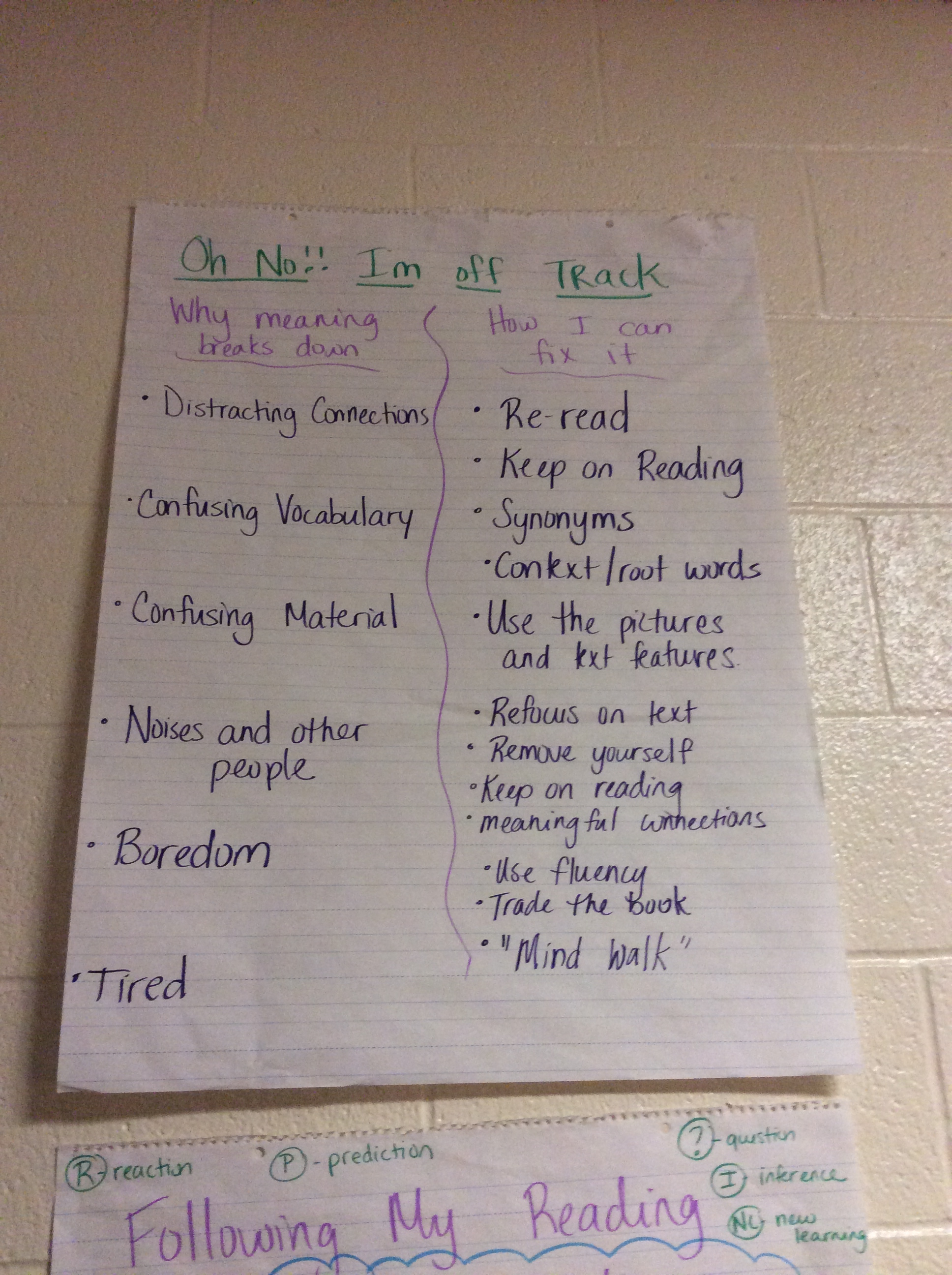

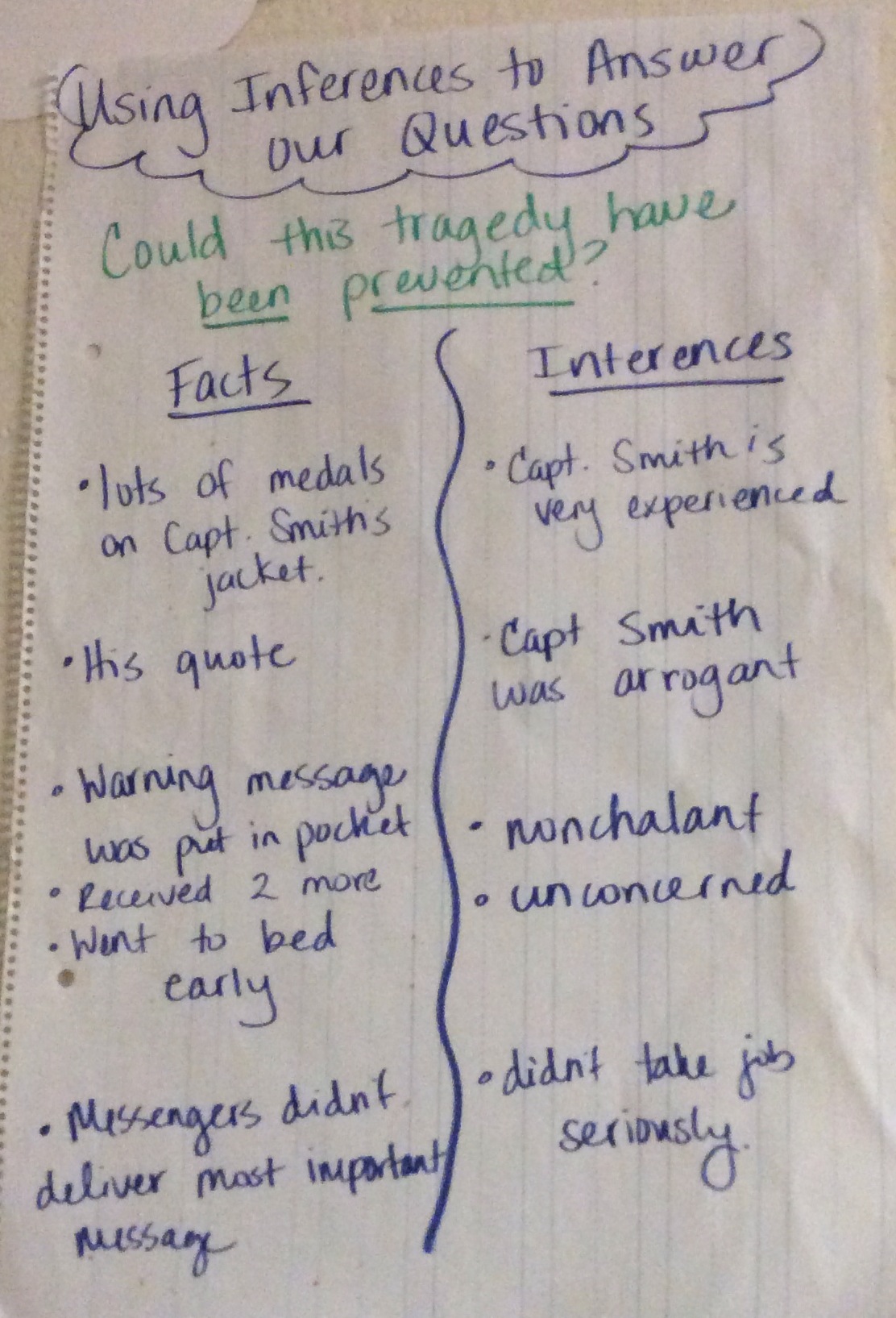
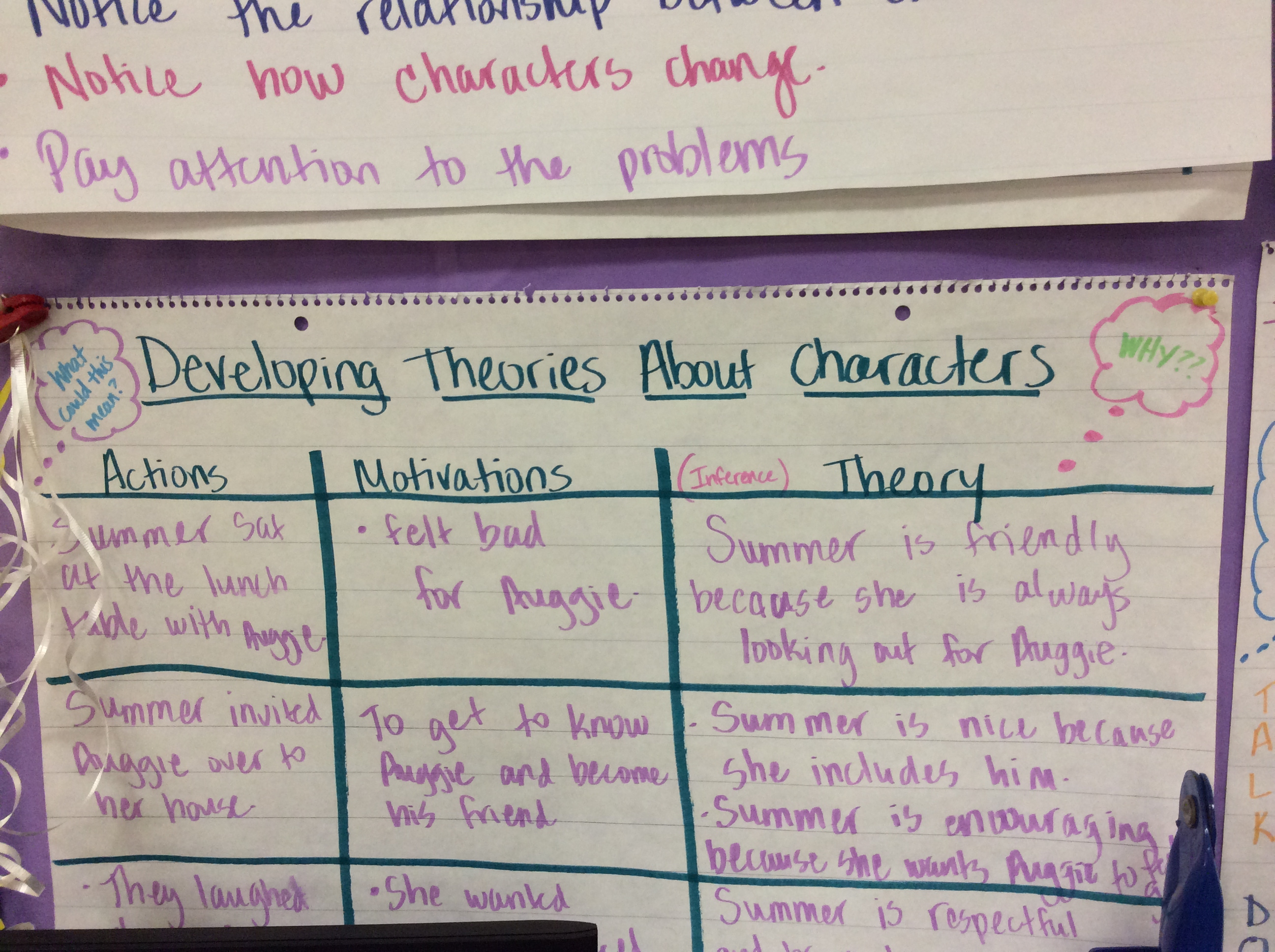



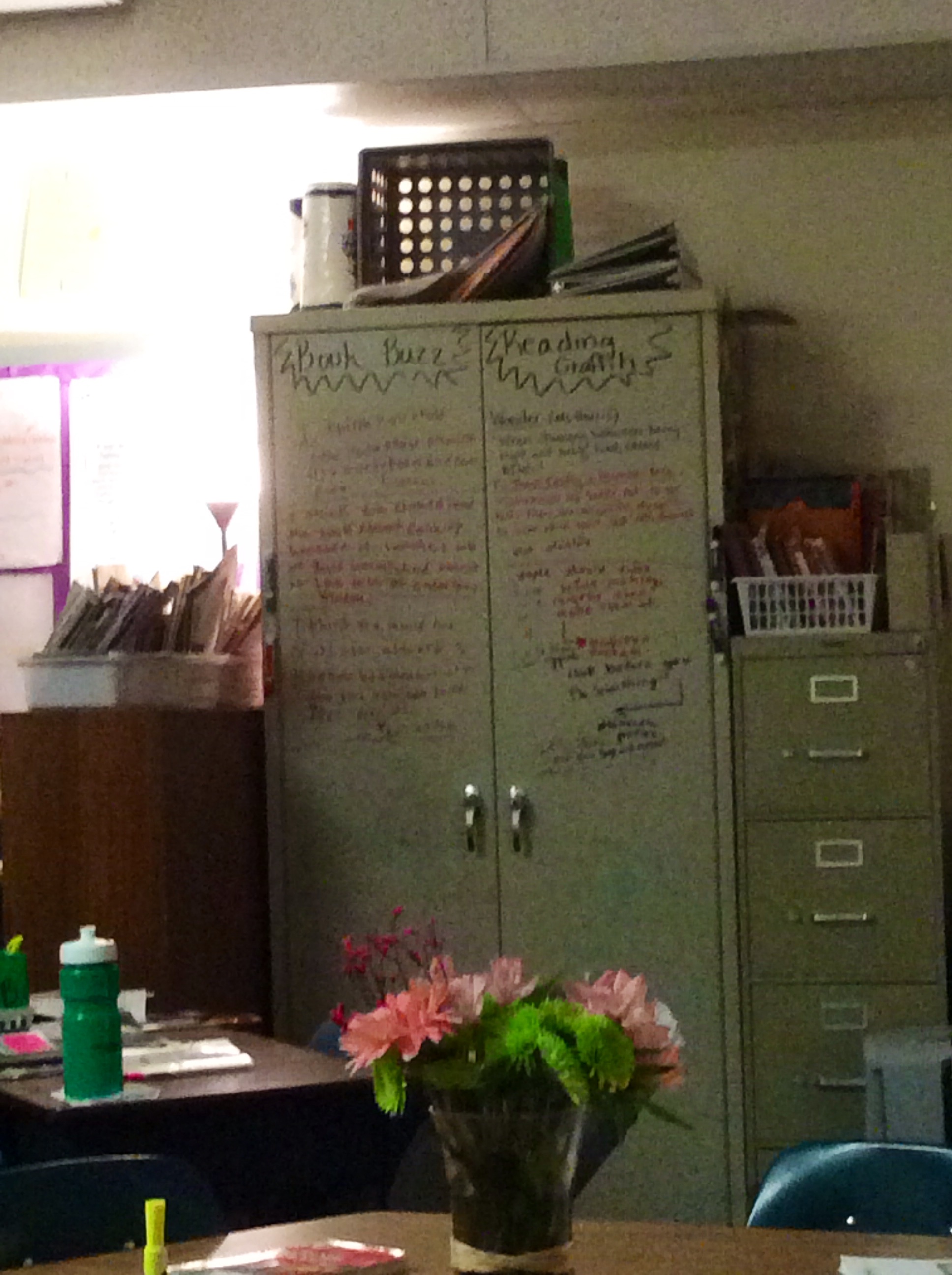
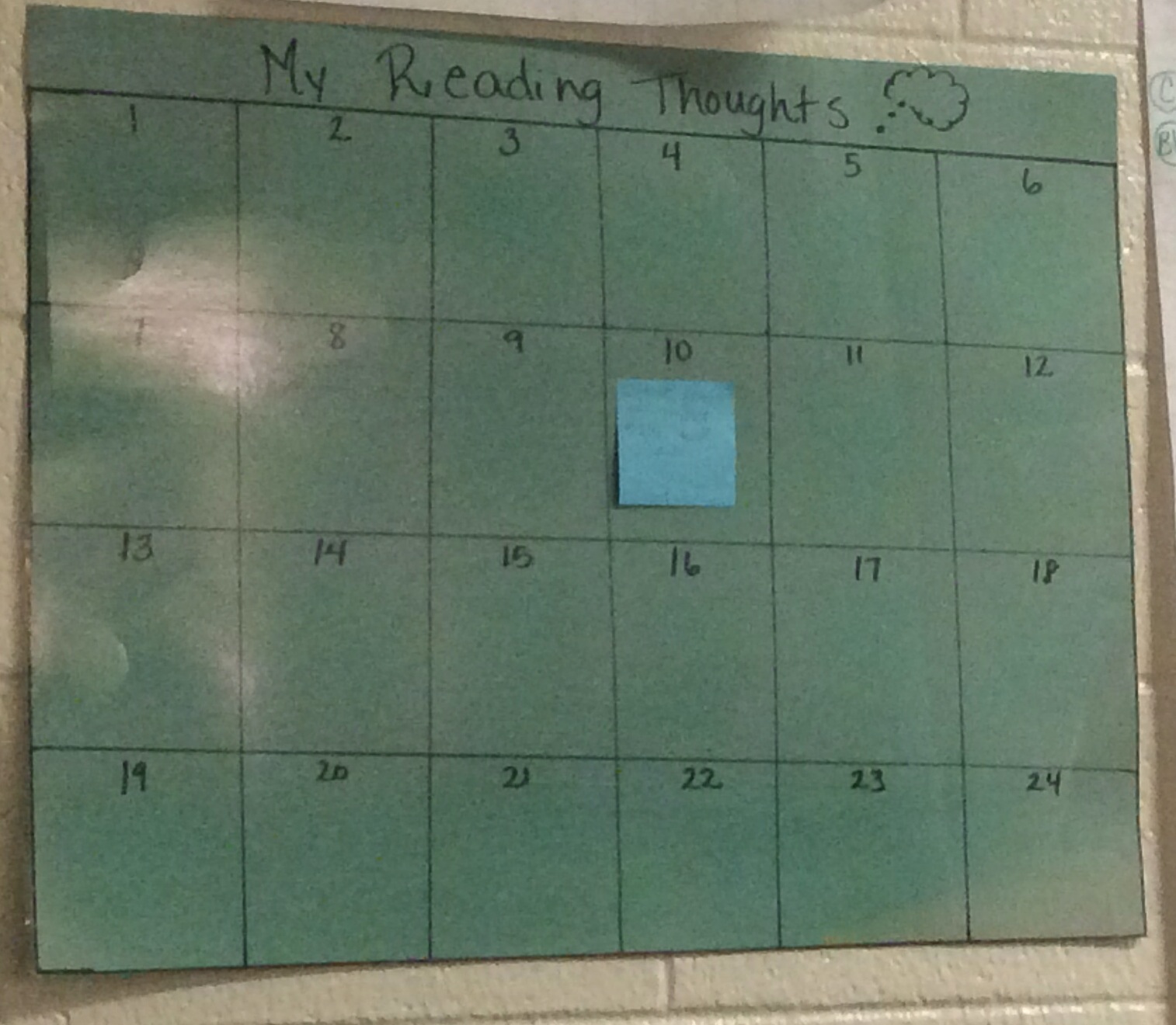






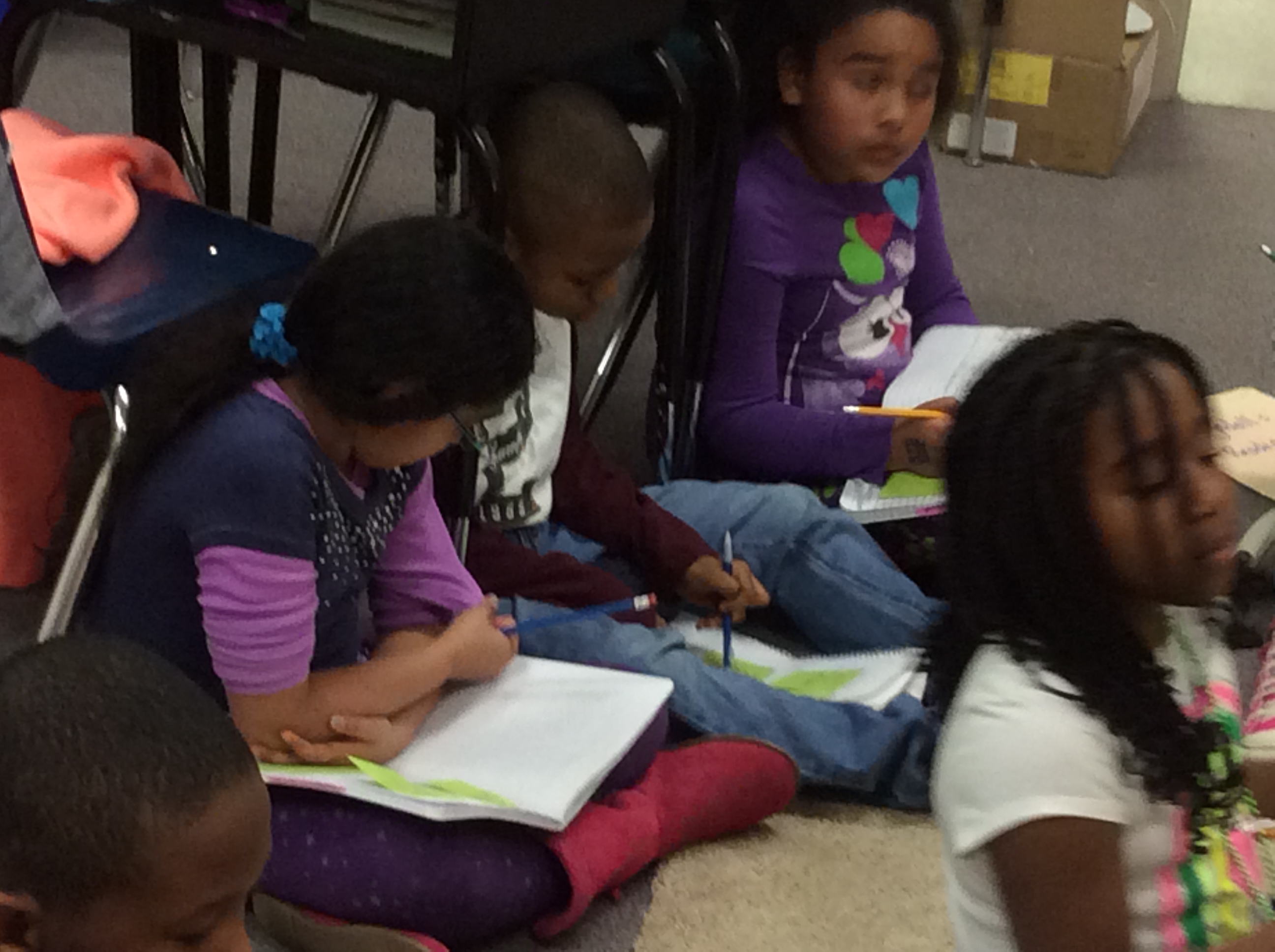
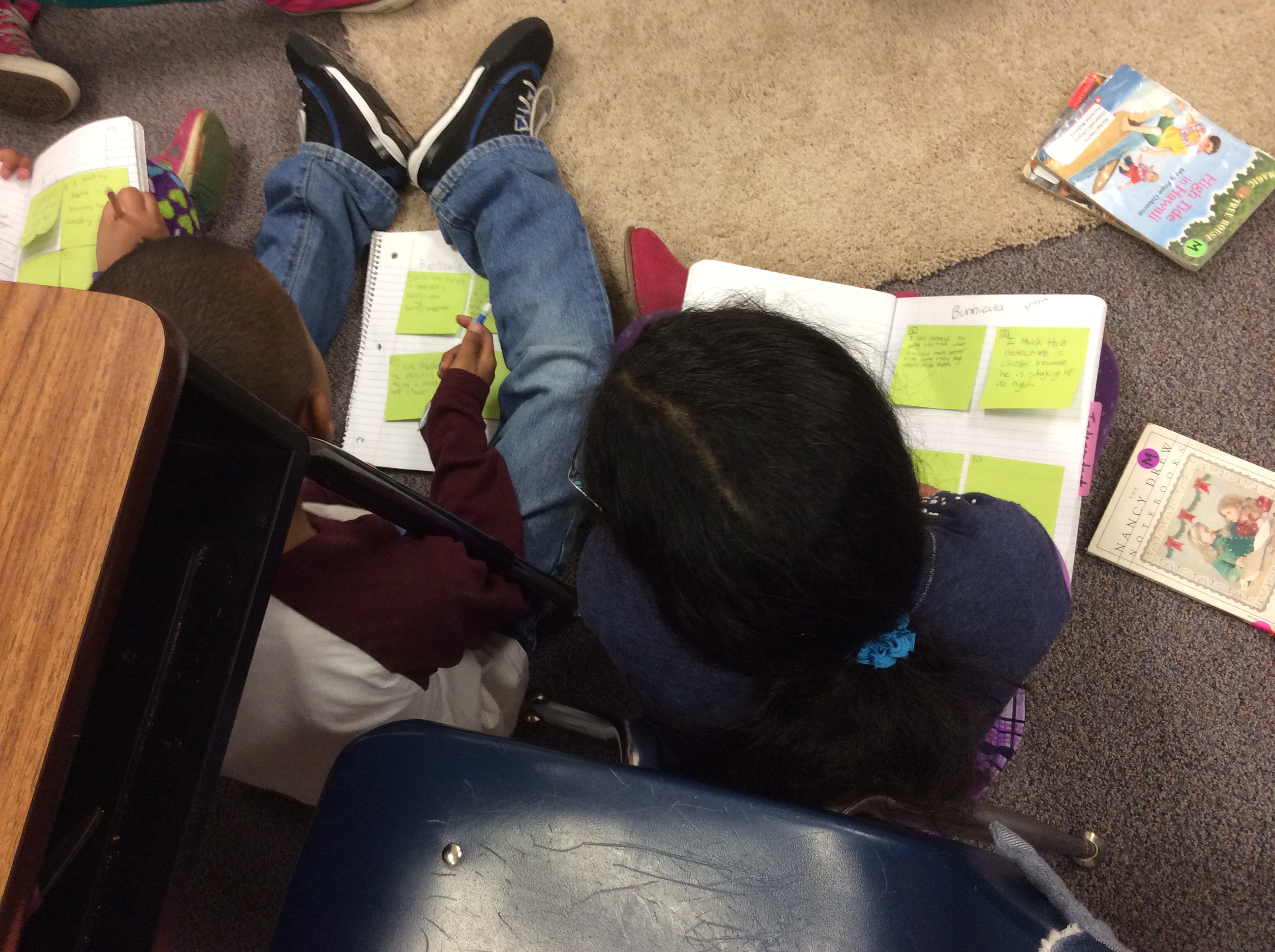
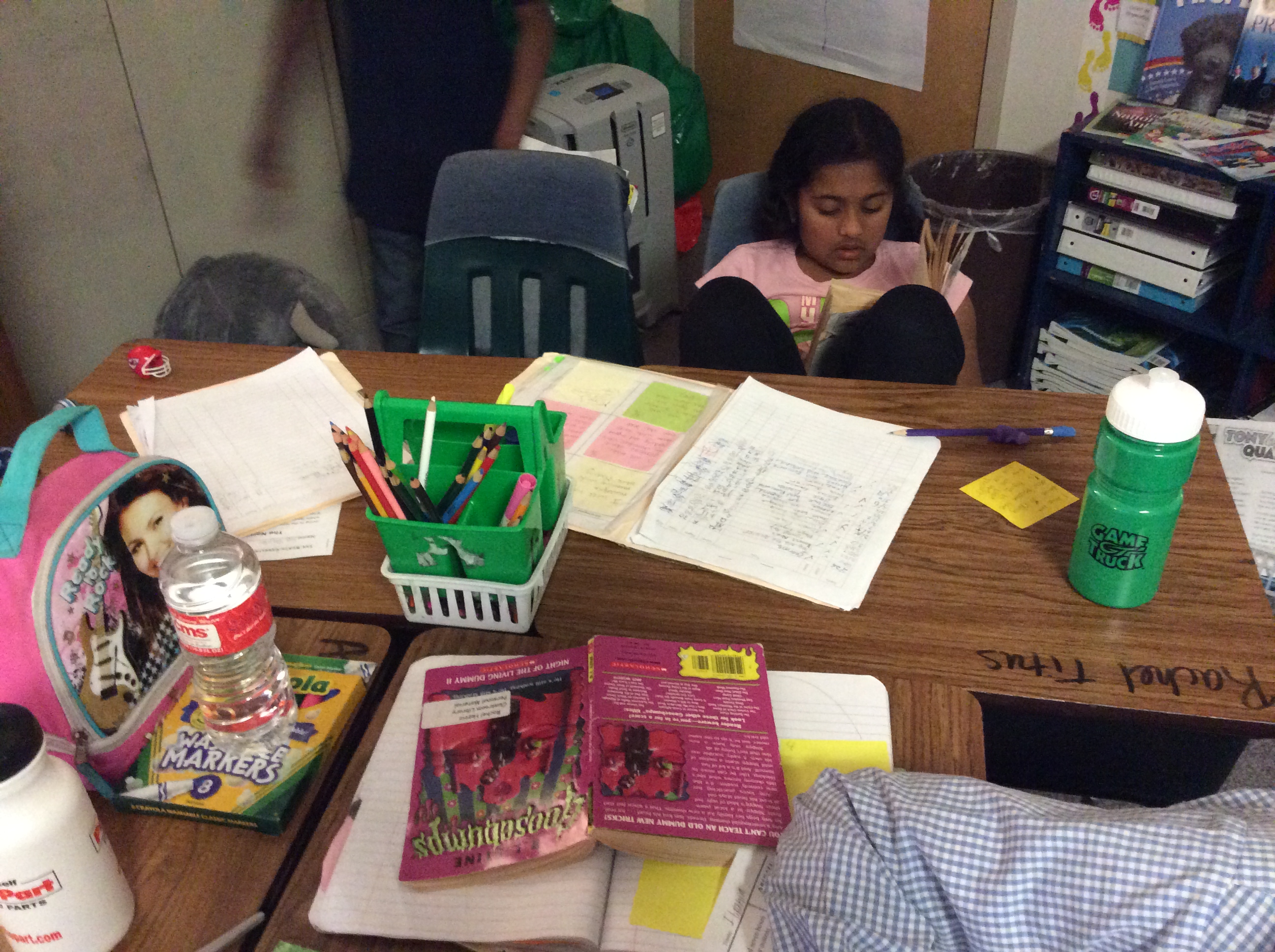
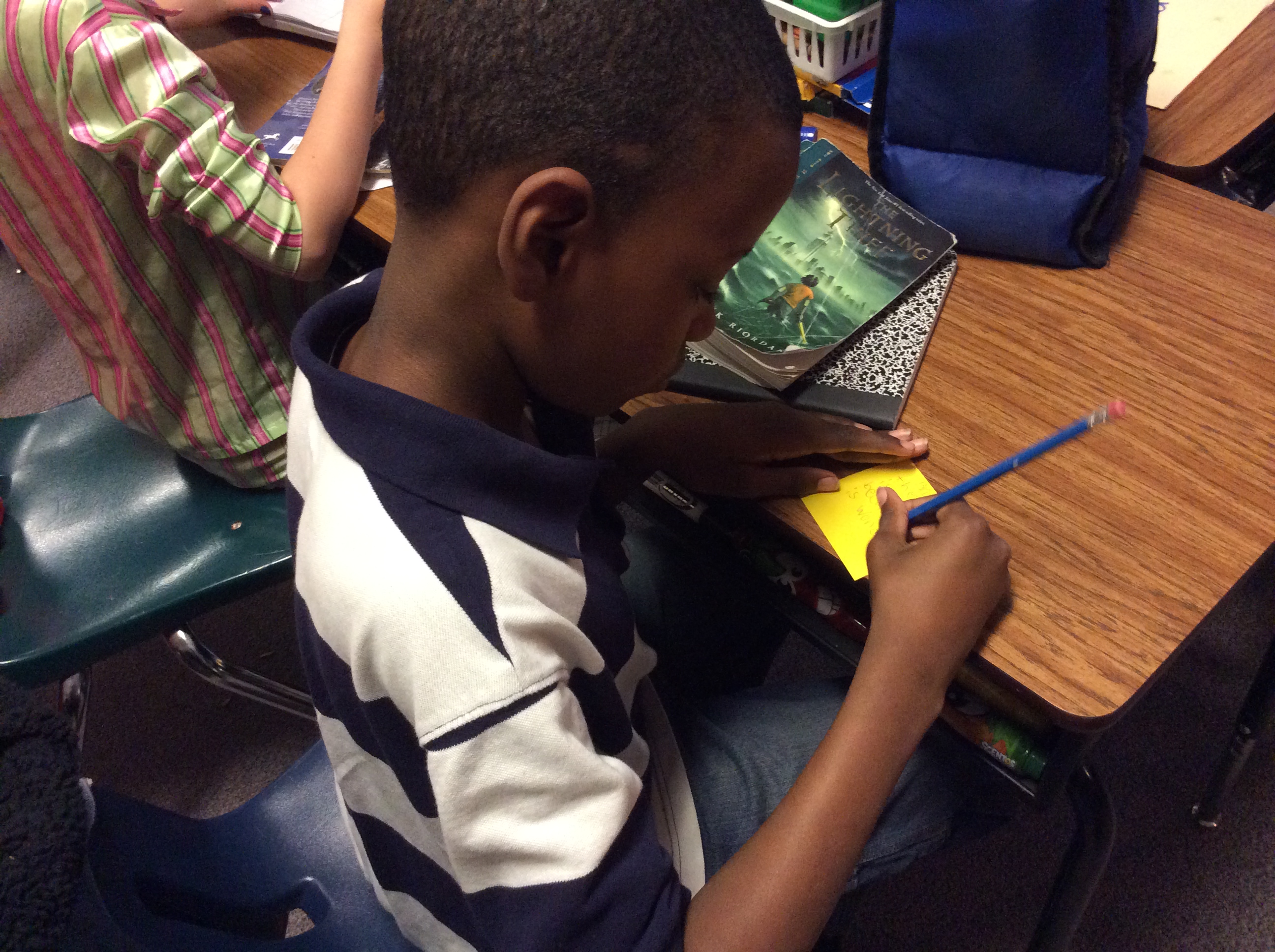
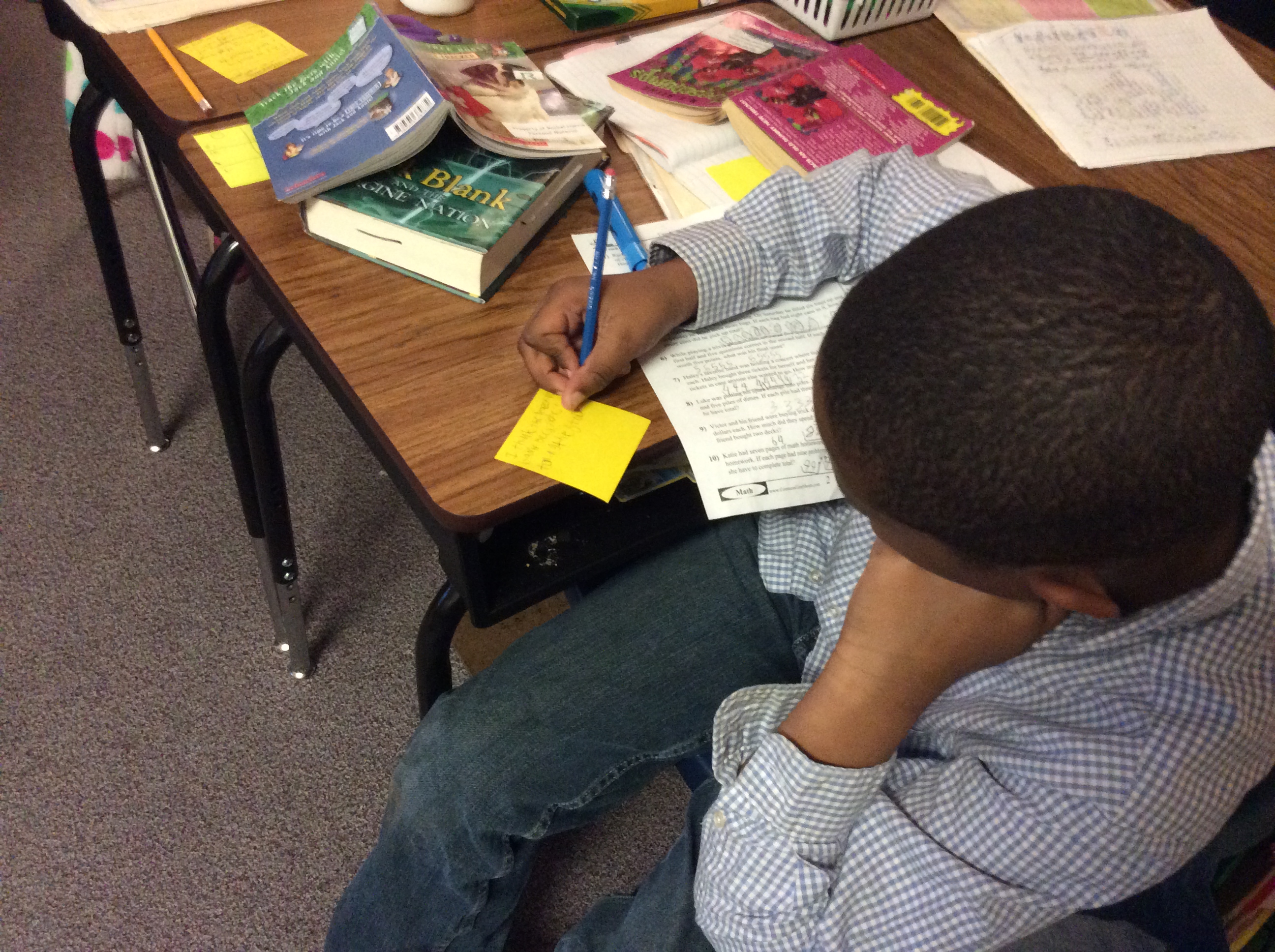

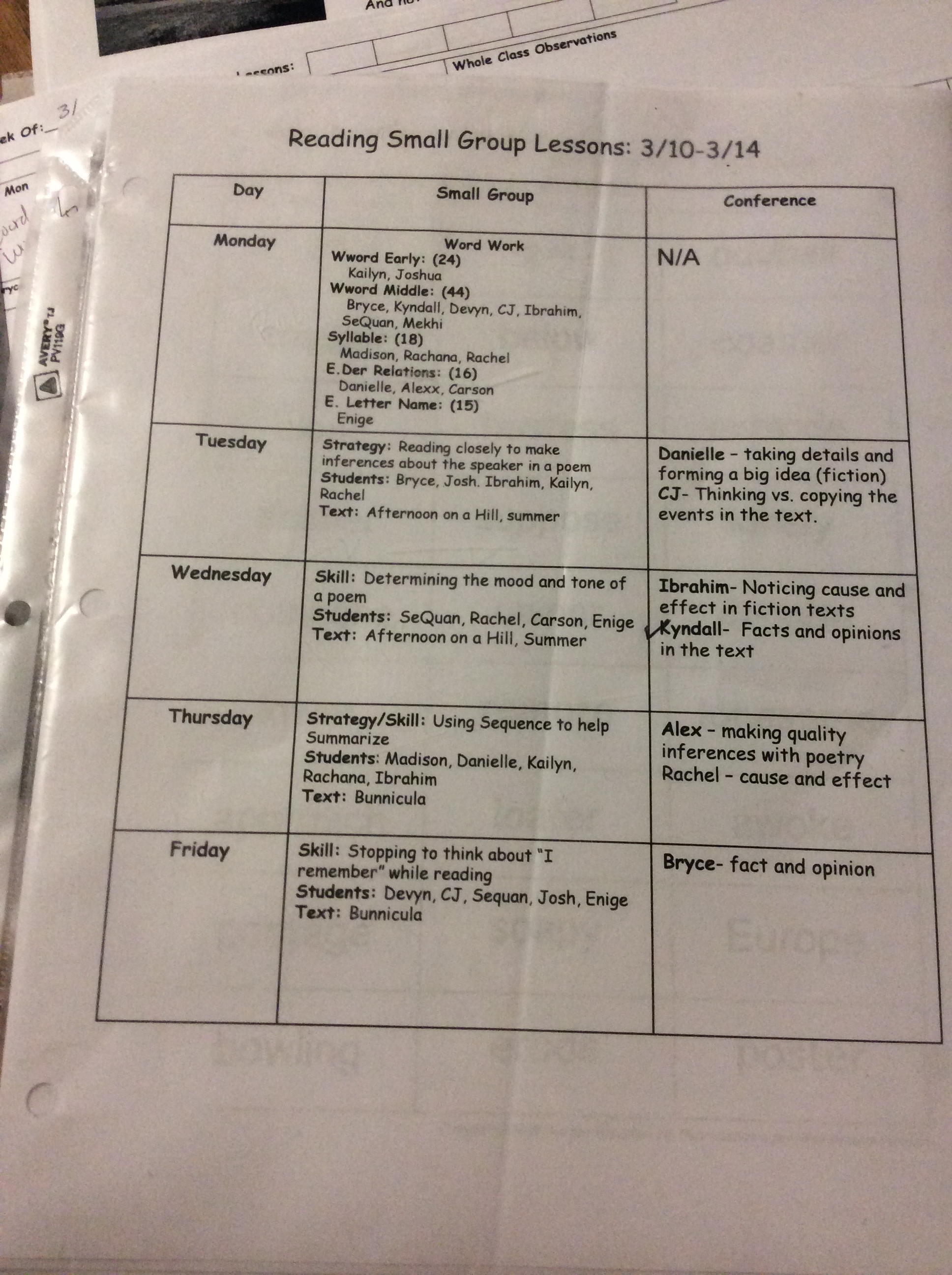


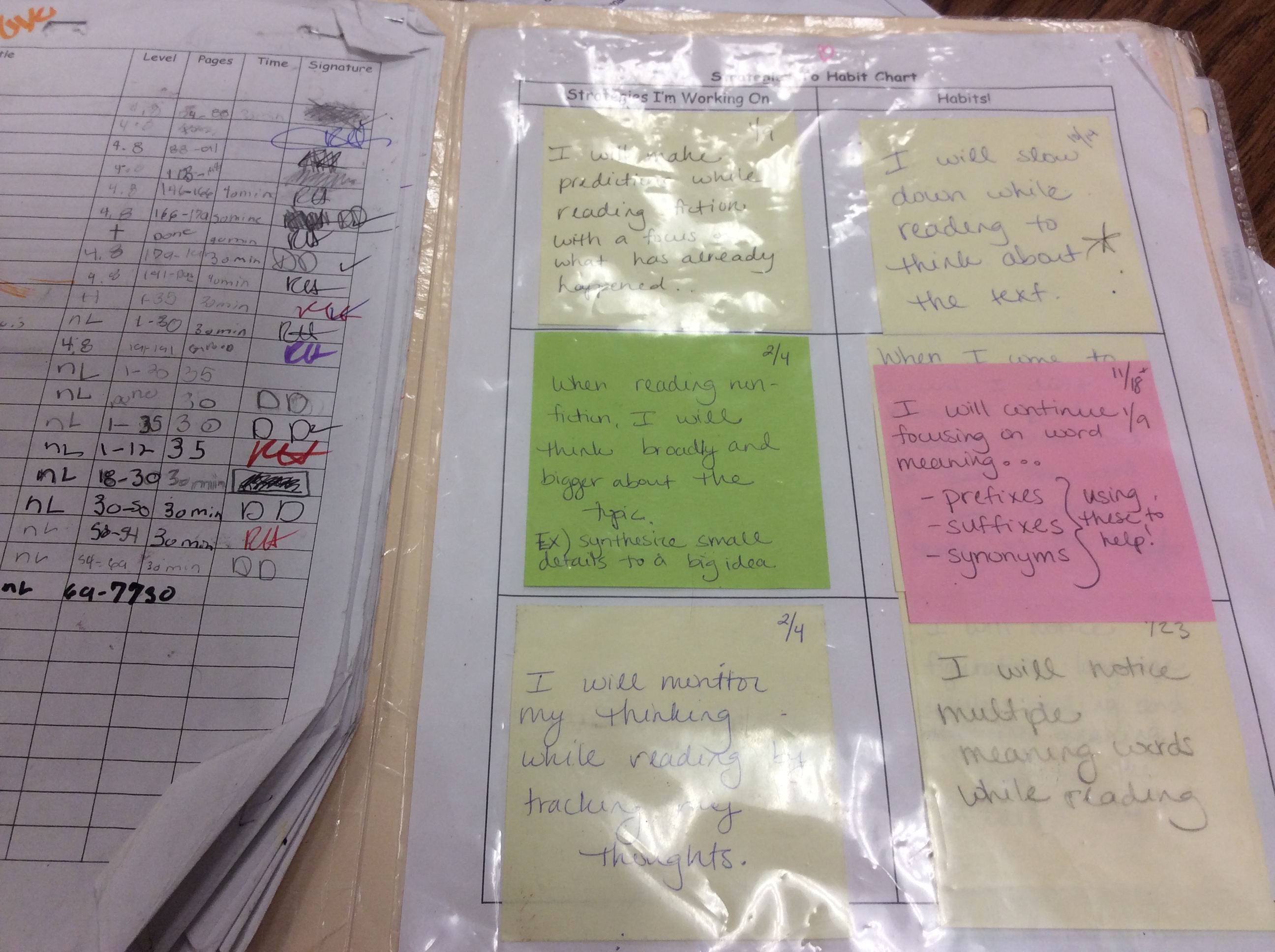

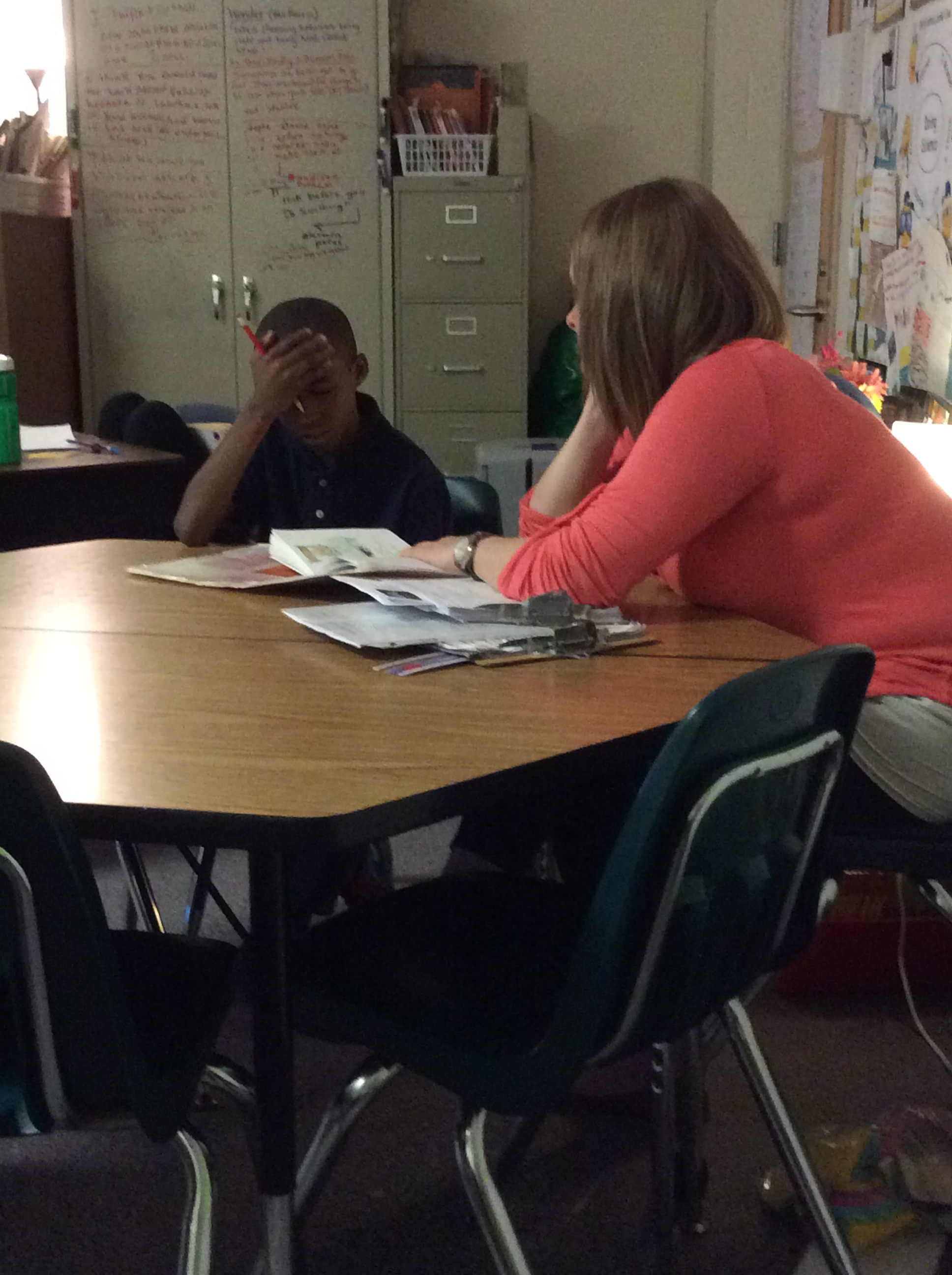

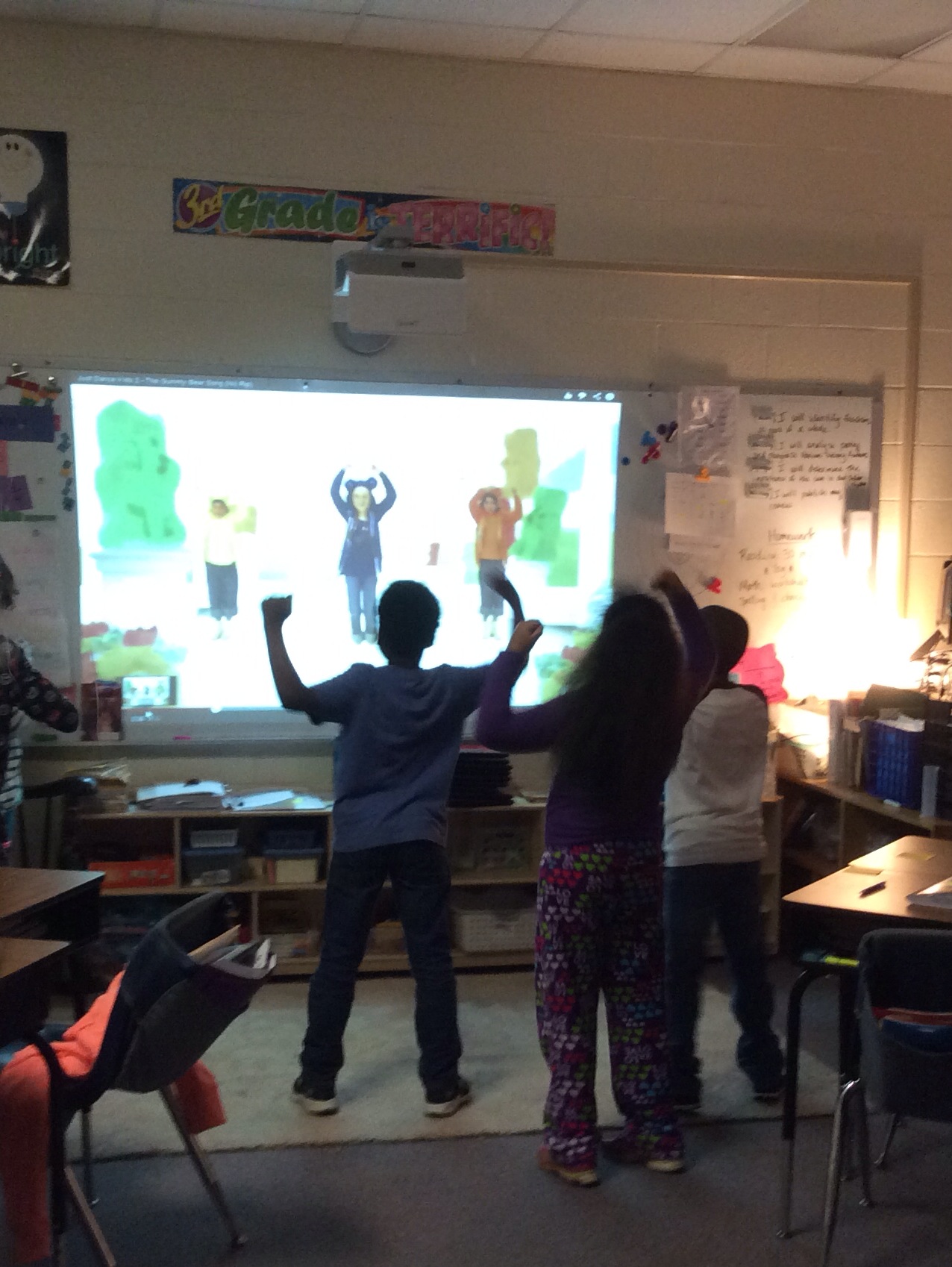
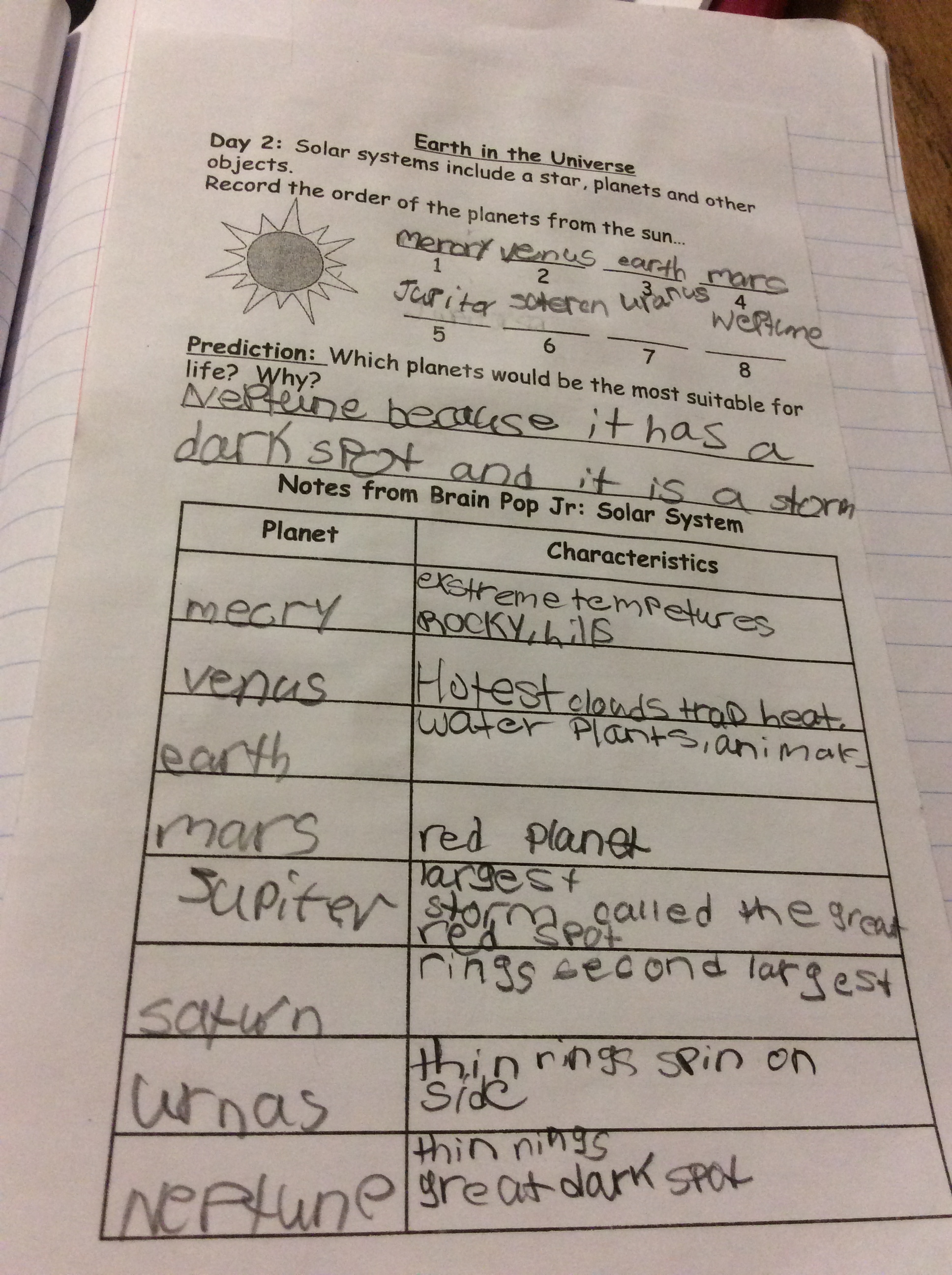
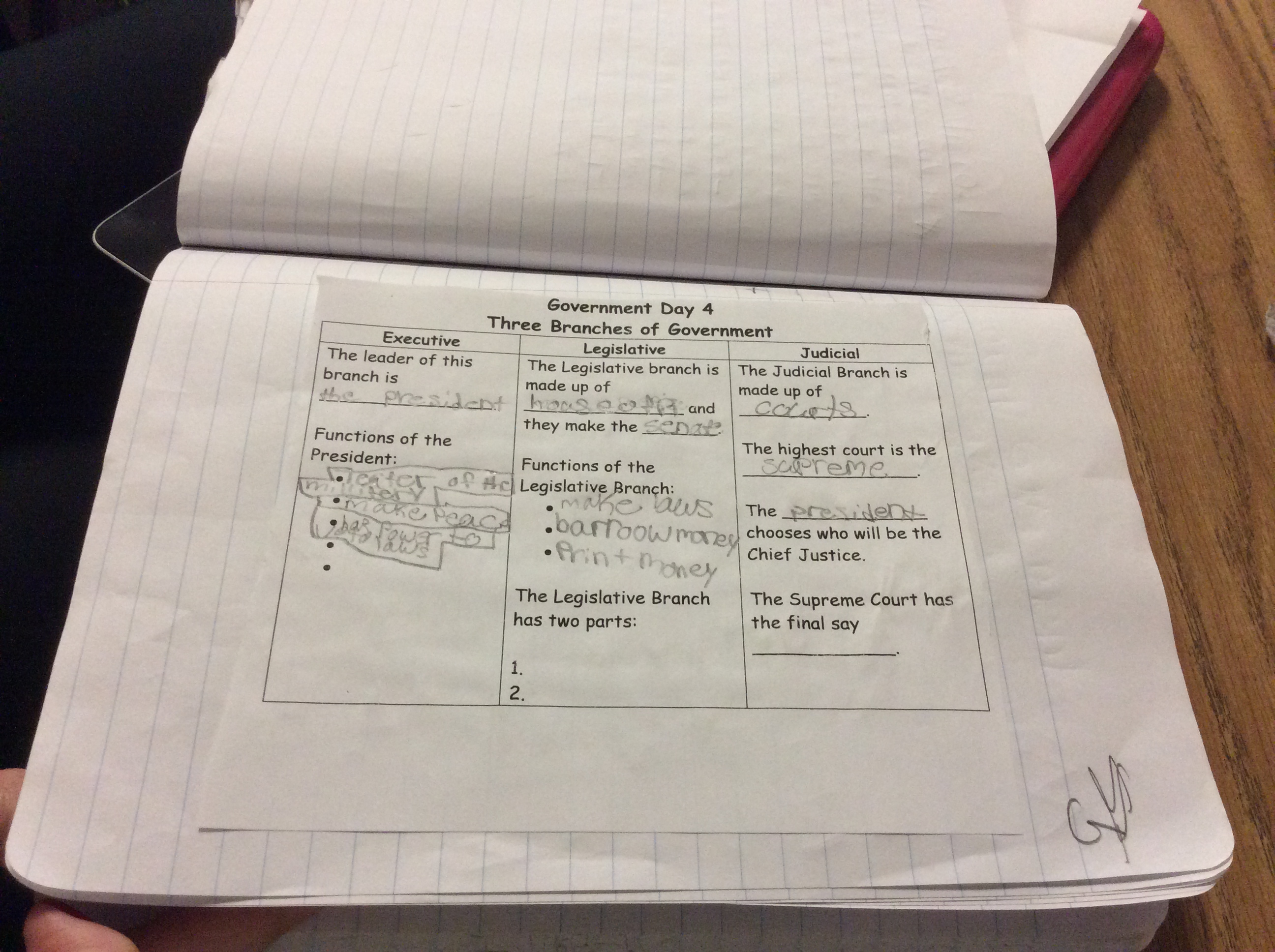

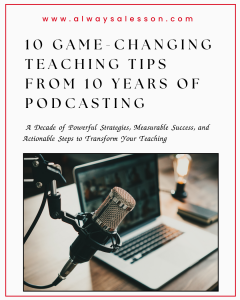
Hello! I just want to offer you a huge thumbs up for your
excellent info you’ve got here on this post. I’ll be returning to
your website for more soon.
[…] I had the opportunity to observe Rachel Harris at Irwin Academic Academy recently [see original post here]. […]
Great site. What book did you use for the Follow my Thinking- Inner Conversation lesson?
Hi there! THe book was Delivering Justice by Jim Haskins! Awesome picture book! 🙂
Thanks Rachel!
[…] I also had to pleasure of learning from an expert in the field of literacy in my district to not only help my own students achieve higher gains, but all those in classrooms whose teachers I mentored; see that post here. […]